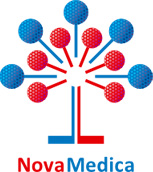
Biotechs getting bigger in late-stage R&D, leaving Big Pharmas behind: report
24 April 2019
The biotech industry is becoming the most active group for later-stage pipeline work, and while Big Pharma sees its R&D share drop, emerging life science companies are better prepared to go it alone.
This is according to a new report by the IQVIA Institute for Human Data Science, "The Changing Landscape of Research and Development: Innovation, Drivers of Change, and Evolution of Clinical Trial Productivity."
The IQVIA report (the company merged from pharma analytics firm IMS Health and CRO Quintiles) has put together an index that “reflects changes in trial complexity, success and duration” over a 10-year historical view of these metrics and “recasts the data with a future perspective that identifies critical productivity changes expected through 2023.”
The report says that the “importance of large pharma in originating molecules is decreasing,” but they “remain important partners” for biotech. Still, they see the need for smaller biopharmas to team up with Big Pharma companies—and their large sales teams—as becoming less important.
“The dynamics of development, M&A and licensing activity seem to be shifting, and emerging companies are retaining control of their assets to a greater degree,” the report's authors write.
Coupled with this is the fact that, according to the index, emerging biopharma companies (the report sees these as spending less than $200 million annually on R&D and less than $500 million in sales) account for 72% of all late-stage pipeline activity, up from 61% a decade ago.
Big Pharma still spends a large amount on R&D: The top 15 largest companies funneled more than $100 billion for the first time last year, but the data show large pharma companies (those with more than $10 billion in yearly drug sales) have seen their R&D share drop from 31% to just 20% in the past decade.
“This pipeline mix reflects smaller companies being most active in the fastest growing areas of oncology and orphan drugs, and their diminishing need for partnering or acquisition to develop and commercialize their innovative medicines,” the report found.
Good news abounds for life science companies, as investment in medical innovation also grew in 2018, “reflecting confidence in scientific development to propel new treatments to tackle unmet health needs across a broad range of diseases.”
Last year, more than 1,300 life science venture capital deals were closed with an aggregate value of more than $23 billion, up around $10 billion in deal value from five years earlier, according to the National Venture Capital Association.
Times from patent filing to product launch have also come down by half a year, in median terms, over the past five years, but it’s still a slow process overall—13.7 years on average, according to the data.
“Of the 2018 new drug launches, four new molecular entities launched in less than eight years, while another 12 drugs launched more than 20 years after their first patent filing, reflecting in some cases older mechanisms of action and the approval of drugs that had launched in countries outside the U.S.”
The report also highlighted the growing importance of artificial intelligence, real-world data, patient-reported outcomes and stronger biomarkers and diagnostics in both trials and post-marketing tests to really drive productivity and better shots on goal in drug development and beyond.
PrintOur news
-
Merry Christmas and Happy New Year!
28 December 2024
-
NovaMedica team in the TOP 100 INFLUENTIAL PEOPLE IN THE PHARMACEUTICAL BUSINESS 2024
28 November 2024
-
05 November 2024
Media Center
-
Enhancing spectroscopy analysis with machine learning
03 February 2025
-
The production of new Russian “super antibiotic” to begin in Novosibirsk
03 February 2025
-
A Russian company has started producing 4 veterinary vaccines
31 January 2025
-
The government held its first meeting on the “New technologies for preserving health” project
31 January 2025